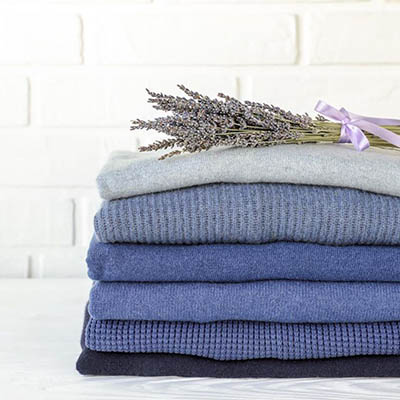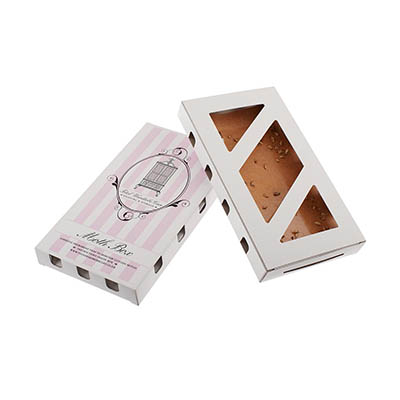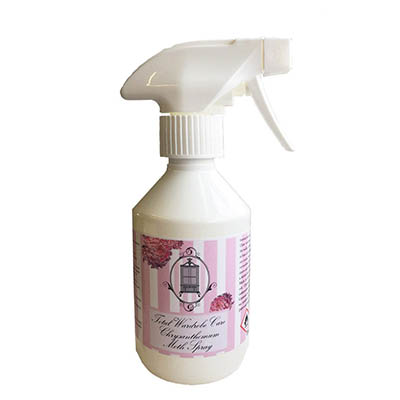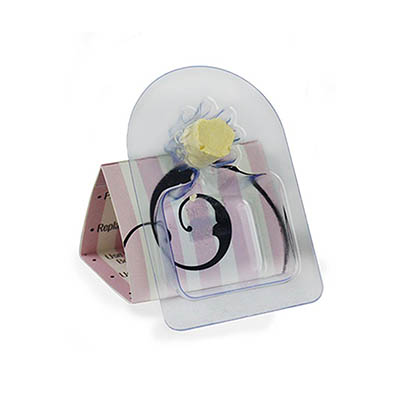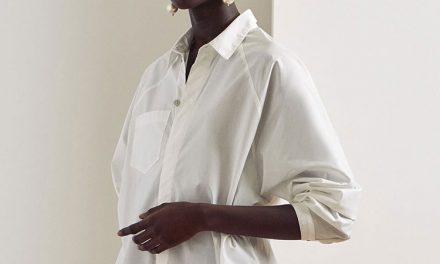How To Make Your Wardrobe Moth Proof with Julia Dee
Taking care of your wardrobe include having a good moth protection plan. We spoke to Julia Dee, Founder of Total Wardrobe Care to find out how to make your wardrobe moth proof.
Moths are our closets’ mortal enemy. They’re able to ruin your clothes in an incredibly short period of time. The little buggers have good taste too, as they prefer natural fabrics like cotton, wool, cashmere and silk. Moths are very likely to choose quality pieces over overworn synthetic sweatpants. Fortunately there are many remedies available, but the ones you can normally find often contain harsh chemicals and should be avoided if possible. They also often happen to have a really unpleasant smell. If you have kids at home, certain chemicals can become dangerous when ending up in the wrong little hands. The good news? We talked to a true expert on the subject, and the founder of Total Wardrobe Care.
Total Wardrobe Care launched over 10 years ago, and was founded by wardrobe expert Julia Dee. With celebrity clients including Gwyneth Paltrow and Elle McPherson, Julia specialises in clothing organisation, storage and protection. Now that we are in the midst of moth season, we couldn’t think of a better person to ask for moth prevention advice. Julia has developed wardrobe products (that smell incredible), with a core range of 100% natural & organic anti-moth solutions. What a breath of fresh air considering the vast majority of anti-moth products rely on harsh chemicals. Total Wardrobe Care is launching a new cedar wood range and has developed a fresh & gender-neutral new fragrance with a scent that appeals to all – except moths! We asked her how to get rid of moths naturally and surprisingly, decluttering your clothes and a minimal wardrobe are a great start.
The Vendeur: What’s the lifecycle of a clothes moth?
Julia Dee: The eggs are laid by the adult female moth somewhere dark and undisturbed with a food source. They normally hatch within 2 months and eat their way out of their little cocoon, which is about the size of a grain of rice. This is when holes appear in your favourite woollies. An adult moth lives for about one month and can lay up to 300 eggs in that time so the whole lifecycle is normally around 3 months. The common breeding time for moths is May to October.
TV: Which fabrics are the most targeted by moths?
JD: Anything natural; wool, cashmere, silk, cotton, fur, leather, rugs, wall hangings, even soft toys made of wool. I once had a client take up a floorboard and find a suede glove that a workman had left behind and it was crawling with moths. The key to any treatment is to try and find the source of the problem. They live in trees, preferably near a stream or river. An old house is perfect as it has nooks and crannies, chimney breasts, cavity walls, airbricks, attics, thatched roofs, air vents and conditioners, under floorboards etc. And of course your wardrobe!
TV: How was Total Wardrobe Care born?
JD: I had a tailoring business in Battersea for many years and was in and out of clients houses on a daily basis doing fittings to their clothes. A common worry for clients was: “What do I do about moths? Which are the best hangers to use? What is the correct way to store clothes?” I was very disappointed with what was then available to sort out moths. Products either smelt disgusting or were filled with chemicals. I found a lovely old Victorian household recipe book, containing a list of the natural herbs that have been used throughout history to repel moths. I then discovered an aromatherapist and perfumer in The New Forest who developed our signature fragrance: lavender, cedarwood, patchouli, lemongrass, clove, laurel, rosemary and thyme.
TV: Do you have any tips on how to organise your wardrobe and drawers?
JD: Clothes are best kept in a wardrobe with closing doors. Whilst a walk-in wardrobe is lovely, make sure that the windows and doors are kept closed. Otherwise, there can be no containment of the moths. Invest in the correct hangers so that they are all the same, it’s easier on the eye. Decide whether all your clothes are going to live in the wardrobe, year-round, or you are going to store unseasonable clothes away. In which case think about how and where will you store the out of season clothes? For example, storing heavy knitwear away safely. Wardrobes are easier to manage when the clothes are kept together with their friends, i.e. all trousers, all jackets, all blouses and tops, coats etc.
TV: Can you give us a list of go-to products to protect against moths?
JD: I recommend starting with the moth box. It’s a pheromone moth trap that catches the male moth, this allows you to see what kind of problem you have. Then seal the room and spray the chrysanthemum natural pyrethrum spray with essential oils, this kills the insects. After a few hours, the pyrethrum has completely evaporated into the atmosphere, leaving a fragrance of essential oils that lady moths won’t like.
Try putting a moth box at one side of the room and a moth decoy at the other. This is a magic bullet that lures the male moth to it and covers his wings in a fairy dust that smells of a lady moth. It confuses both the male and female and helps to stop the breeding cycle. As the moths fail to breed, the lifecycle is interrupted. Over time, without any moths being killed, the powder helps to create a reduction in moth numbers. Repeat every 3 months, and you will stay on top of the problem. It’s a gradual process but avoids the need for costly nasty chemicals or even expensive pest controllers.
TV: Speaking of nasty chemical deterrents, what are the products to avoid?
JD: Harsh chemicals. Sprays are usually made from synthetic chemicals but our Pyrethrin is natural and comes from chrysanthemum flowers sustainably farmed in Kenya. The synthetic version is called Pyrethroid, and on the bottle, you will also see the name Transfluthrin. It’s also mixed with piperonyl butoxide which is a nasty preservative to make the chemical last longer. Once sprayed it stays in the room and will leave its residue. Watch out for the term “with added lavender”. Again this will be a synthetic lavender scent and has no function in repelling moths at all. It merely adds a scent. If you google the effects of Pyrethroid, Transfluthrin and Piperonyl Butoxide, you will run a mile!
TV: Is having a minimal, capsule wardrobe useful?
JD: Wardrobes can harbour dust, dirt and insects and can get a bit smelly. Especially if shoes are kept in the same place. It’s good to have a wardrobe turn out each season. Give the space a good hoover and clean. If you wear everything and it’s all in order with a tiny space between each item, choosing what to wear will be a pleasure and not a fight each day.
TV: What are the questions you get asked the most during your Zoom consultations?
JD: Each customer has a slightly different story. One example was a customer who just couldn’t get rid of moths. They lived in a large Victorian house in Putney by the river. So we went through my list, and I found out they had 16 fireplaces. Once I found this out I sent them off with the chrysanthemum spray to spray inside all the chimneys… Hopefully that did the trick!
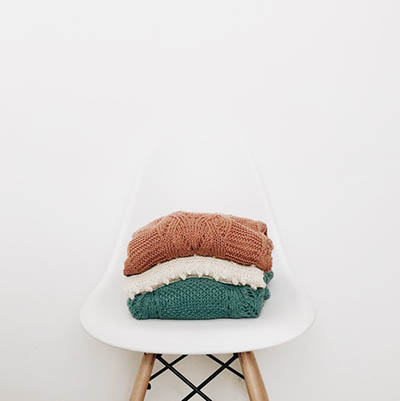
TV: Can you tell us more about the Total Wardrobe Storage?
JD: About 20 years ago I was asked by a client if I could store a rail of her coats. She said “You have lots of space, can you just keep my coats through the winter and I’ll pay for hanging space.” This led to me researching how to store clothes and the best environments to keep them in. It became very popular with my clients and turned into another business. We have a dedicated storage and office 40 miles outside London in a secret location. The temperature and humidity are kept constant, and the security is paramount. We have pop groups tour clothes, actresses’ wardrobes, people moving house, renting or living abroad or sometimes a refurb. It can even sometimes a rail of clothes out of season. We have even started storing a lot of wedding dresses with so many brides having to cancel weddings recently. It means they don’t have to store a huge wedding dress at home may an unsuspecting partner may stumble across it.
Did This Put A Smile On Your Face? Why Not Subscribe?
If you enjoyed this then theres plenty more on our email newsletters that you'll love. Whether you're a sustainable newbie or an eco conscious pro, our bi monthly emails will inspire you to live sustainably and ethically.
Disclaimer: The people and models in the images featured are not associated with The Vendeur and do not endorse it or the products shown. This post may contain affiliate links. Prices correct at time of publishing.
We were sent a sample of this product to try before we made our recommendation to you. We were under no obligation to feature the product, we only include products we like and that we think work.


